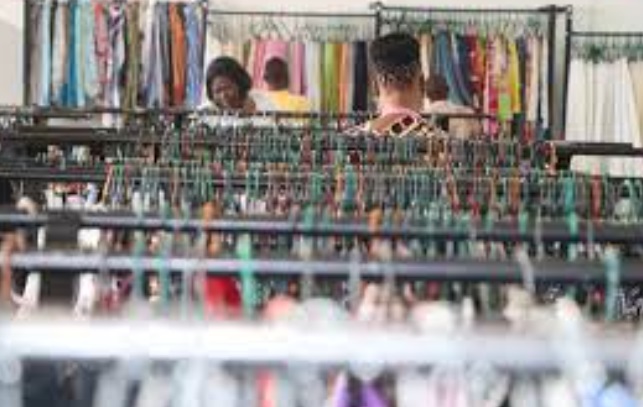Mozambique: Profits at bank BIM halved in first six months
Mozambique: A look into the impacts of a “gigantic” market of second-hand clothing

FILE - For illustration purposes only. ]File photo: ADPP Moçambique]
Around 80% of Mozambicans buy second-hand clothing, mainly from Europe, preferring it to new clothing manufactured in Asia (which lasts less long), with one million families benefiting from this market, according to a sector representative.
In an interview with the Lusa news agency in Lisbon, the coordinator of the Business Development Centre of the Beira Commercial Association, Fernando Hin Júnior, said that this market in Mozambique is “gigantic”.
“Mozambique absorbs 1.7% of imports worldwide,” he said, indicating that the circular economy “has gained much greater momentum” in this country, with many traders surviving on the second-hand clothing business, stock for which is imported from Europe (18%) and other regions.
The ‘country of the capulanas’ imported 39,320 tons of used clothing in 2023, making it the second largest importer of these items in the Southern African Development Community, after Tanzania.
Fernando Hin Júnior explained that these clothes, many of them donated and others purchased, arrived in Mozambique via the Port of Beira, from where they are taken to the city’s sorting centre, run by the non-profit organization ADPP.
This organization, associated with the centre coordinated by Fernando Hin Júnior, sorts, prepares and packs the clothes. Retailers then buy the bales to resell in local open-air markets or elsewhere.
“Those who sell obviously earn some money to support their families. It is also an opportunity for Mozambican families, because most of them cannot afford to buy new clothes,” he said.
According to Fernando Hin Júnior, selling these used clothes results in cheaper and more diverse products, allowing families to save a little money for other expenses, such as health and education.
When asked about possible environmental damage, he said that in Mozambique this problem does not exist, as the country “has a culture of reusing second-hand clothes”.
He gave an example: “When second-hand clothes arrive at the sorting centres, only about 5% are low-quality clothes that cannot be reused, but are recycled by local cleaning industries”.
The rest is sold and can also be transformed by tailors who work in these local and open-air markets.
“When consumers no longer need the clothes they bought in these markets, they pass them on to family and friends. There is a culture of reusing. The only waste is that which results from the work of the tailors,” Fernando Hin Júnior added.
In Mozambique – where each person buts on average 1.3 kg of clothing per year, less than the average of five kilos in the rest of the continent and the 15 kg in Europe – there are no local textile industries, so second-hand clothing does not threaten the national market.
The alternative is “fast fashion” manufactured in Asia from synthetic fibres, which could come to dominate the market for second-hand clothing from Europe, due to the new rules resulting from the European Union Waste Shipment Regulation and the Basel Convention.
“Mozambicans prefer European clothing, which is of better quality and lasts longer,” Júnior stressed.
Africa is the largest market for second-hand clothing in the world, absorbing almost 35% of production, with the countries of the European Union and the United Kingdom being the main exporters.












Leave a Reply
Be the First to Comment!
You must be logged in to post a comment.
You must be logged in to post a comment.